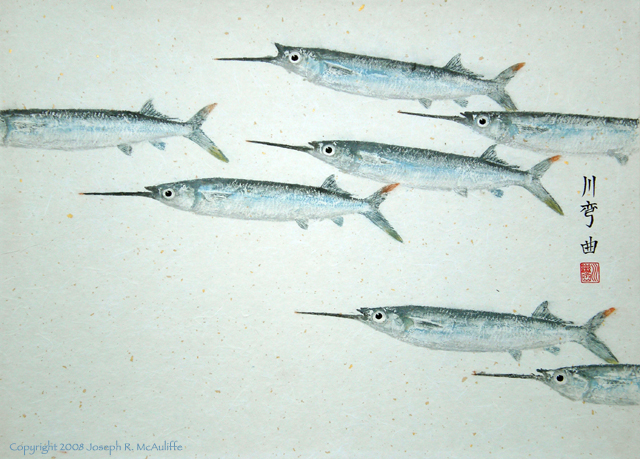
The ballyhoo, like other members of the halfbeak family (Hemiramphidae), has an unusual, elongated lower jaw. These small fish seldom reach over a foot in length and swim in schools in shallow coastal waters. The long, lower jaw is rigid, but the upper jaw opens and shuts in order to seize small planktonic organisms at the surface. Their pursuit of prey near the ocean’s surface is dangerous because even larger predators relish the ballyhoo. Countershaded coloration helps hide the ballyhoo from the view of predators above and below. The darker shaded backs blend in with the dark blue water as viewed from above by a diving pelican. The silvery lower part of the body, when viewed from below by a deep, lurking predator, blends into the brightness of the illuminated sky above the water’s surface.
Various species of the halfbeak family are found worldwide in temperate and tropical seas. The ballyhoo (Hemiramphus brasiliensis) is found in the western Atlantic along the southeastern coast of the United States and within the Gulf of Mexico and the Caribbean Sea, southward in coastal waters to Brazil. It is also found in the eastern Atlantic along the coast of Africa and in the Cape Verde Islands.
Although it is used as a food fish in some regions, much larger numbers are harvested in Florida for use as bait for big-game fishing. Since the early 1970s, an estimated 1 million pounds of ballyhoo per year are harvested for use as bait.
Size: 24 x 17 inches (2007)
Return to Gallery 4.